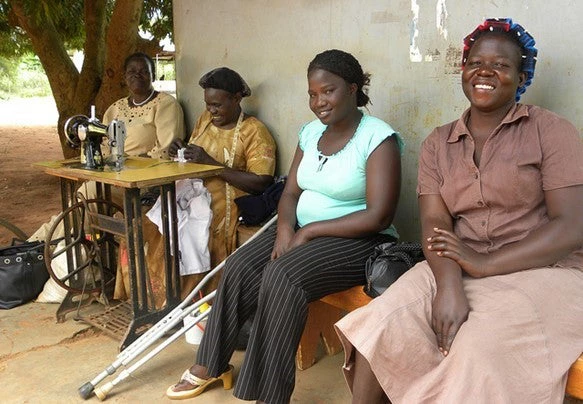
The relationship between poverty and disability goes both ways: disability increases the risk of poverty , and the conditions of poverty increase the risk of disability.
Yet, little attention has been given to the employment readiness of persons with disabilities. This is of concern given that the employment rates of persons with disabilities are a third to half of the rates for persons without disabilities, with unemployment rates as high as 80%-90% in some countries.
[Learn more: Disability Inclusion]
Disability is a complex, evolving, and multidimensional concept. Currently, it is estimated that 15% of the world population experiences some form of disability, with prevalence rates higher in developing countries. As opportunities for sustainable income generation are directly tied to a person’s access to finance, markets, and networks, persons with disabilities usually face significant challenges in accessing these, due to:
- non-inclusive regulations and policy,
- lack of resource allocation,
- stigma and societal prejudice,
- low educational participation, and
- inability to access their own communities and city spaces.
We need to do much more to ensure that women with disabilities are mainstreamed into projects that seek to empower women as entrepreneurs and change agents.
Expanding equitable opportunities for persons with disabilities is at the core of the World Bank’s work to build sustainable and inclusive communities. So, what might a disability-responsive moonshot look like for development projects addressing work for persons with disabilities? Here’s what we’re doing at the World Bank:
[Download report: Inclusion Matters: The Foundation for Shared Prosperity]
We have a framework:
- The new Environmental and Social Framework (ESF) requires countries to think about the disability-responsiveness of World Bank-funded projects, such as adapting workplaces to include workers with disabilities and to ensure that new buildings and structures are accessible to all.
- In Rwanda, the World Bank has supported the economic reintegration of ex-combatants, including those with disabilities, through training and access to grants for micro-projects.
- In Jamaica, we have supported 1) employment skills for adults with disabilities, and 2) improved education systems for youth with disabilities. The project has already helped to train 336 persons with disabilities, 77% of whom are employed or pursuing advanced training; and 180 are undergoing the current round of training.
- In India, we are working with the Ministry of Skills Development and Entrepreneurship. Under the Skill India Mission Operation, which incorporates disability into job diagnostics and skill gap analysis, it is building inclusive training centers, establishing job referral and placement programs for persons with disabilities, strengthening self-employment provision, and evaluating the use of ICT to offer training in remote areas and skills for high-growth sectors. In addition, there are specific strategies for women with disabilities.
- In Croatia, the Bank has helped to modernize the social protection system to enable people with disabilities to transition out of institutions so that they can experience greater social inclusion and more opportunity to join the workforce.
- The use of accessible ICT in the transportation sector, education, urban development, and for citizen engagement – all form part of an eco-system critical for persons with disabilities to be included in skills development, have jobs, and contribute to society.
Related:
- Overview: Disability Inclusion | Social Inclusion
- Blog: Leaving no one behind – achieving disability-inclusive disaster risk management
- Blog: What the New Urban Agenda tells us about building inclusive cities
- Subscribe to our Sustainable Communities newsletter
- Follow us on Twitter (@WBG_Cities) and Flipboard



Join the Conversation